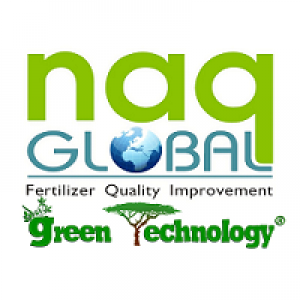
Naqglobal
Uploaded on May 2, 2024
Category
Technology
Several factors influence how well plants can utilize the nutrients provided by fertilizers, and understanding these can help farmers and gardeners make more informed decisions. Below, we explore the key factors that affect the efficiency of fertilizer application. There are several sustainable fertilizer treatment solutions available as well.
Category
Technology
what are the factors affecting the efficiency of fertilizer application
What are the factors affecting the efficiency of
fertilizer application?
Fertilizer application is critical to modern agriculture, enhancing crop yield and
quality. However, the efficiency of fertilizer use is not just about applying more; it’s
about optimizing its effectiveness.
Several factors influence how well plants can utilize the nutrients provided by
fertilizers, and understanding these can help farmers and gardeners make more
informed decisions.
Below, we explore the key factors that affect the efficiency of fertilizer
application. There are several sustainable fertilizer treatment solutions available
as well.
1. Type of Fertilizer
The choice of fertilizer—whether chemical, organic, or a combination of both—
significantly affects its efficiency. Chemical fertilizers are immediately available to
plants but can quickly leach away. In contrast, organic fertilizers release nutrients
more slowly and improve soil structure but may not immediately meet rapid
nutrient demands. Each type has its specific application scenarios based on crop
needs and soil conditions. Organic fertilizer coating is very useful in improving the
quality of production.
2. Soil Health and Composition
Soil health is foundational to fertilizer efficiency. Nutrient-rich, well-structured soils
with good tilth and organic matter promote better root growth and nutrient
uptake. Parameters like soil pH, electrical conductivity, and organic matter content
influence nutrient availability and should be adjusted to match the nutrient form in
the applied fertilizers. For instance, certain nutrients are more available in acidic
or alkaline conditions. Green technology for fertilizer is highly beneficial when it
comes to solutions.
3. Application Method
Fertilizers can be applied in various ways, including broadcasting, side dressing,
foliar application, and fertigation. Each method affects how closely the nutrients
are placed on the plant roots and their availability. For instance, fertigation can
enhance nutrient uptake by delivering fertilizers directly through irrigation
systems, minimising losses and improving distribution uniformity.
4. Timing of Application
The timing of fertilizer application can significantly influence its efficiency. Applying
fertilizers when plants are most actively growing and can uptake nutrients can lead
to better utilization and less wastage. For example, using nitrogen during the early
stages of leafy vegetable growth can optimize growth rather than later in the
season when it could promote excessive leafiness over fruit production.
5. Environmental Conditions
Weather conditions at the time of application and subsequently can affect fertilizer
efficiency. Rainfall can wash away fertilizers, while drought conditions can prevent
roots from dissolving and absorbing nutrients. Temperature also plays a role, as
colder soils can slow down microbial activity and nutrient availability.
6. Water Management
Proper irrigation is crucial in enhancing fertilizer uptake. Both over- and under-
irrigation can lead to nutrient leaching or ineffective nutrient use. Maintaining an
optimal moisture level in the soil ensures that nutrients are adequately dissolved
and are available to plant roots.
7. Crop Type and Growth Stage
Different crops have varying nutrient needs at various growth stages. Tailoring
fertilizer types and application rates to the specific crop and its growth stage can
significantly improve efficiency. For instance, grain crops may require higher
nitrogen levels at planting and early growth stages but less during grain-filling.
8. Precision Agriculture Techniques
Modern technologies like GPS, sensors, and drones are revolutionizing fertilizer
applications in agriculture. Precision agriculture techniques allow for the variable-
rate application of fertilisers, which adjusts the amount of nutrients applied in
specific areas of a field based on real-time data about soil and crop conditions. This
can lead to significant improvements in efficiency and environmental
sustainability.
9. Regulatory and Economic Factors
Regulations related to nutrient runoff and environmental protection can affect how
and when fertilizers are applied. Economic factors, such as the cost of fertilizers
and the financial returns on crop yields, also play a critical role in decision-making
processes regarding fertilizer use.
Conclusion
Maximizing the efficiency of fertilizer application requires a holistic approach that
considers various agronomic and environmental factors. By understanding and
managing these factors, farmers can ensure that they use fertilizers most
effectively and sustainably, leading to better crop yields and reduced
environmental impact. As the agricultural sector evolves, staying informed and
adapting to new methods and technologies will be crucial in achieving these goals.
Source Link:
https://www.reddit.com/user/NaqGlobal1/comments/1cbsw04/some_factors_affecting_the
_efficiency_of/

Comments